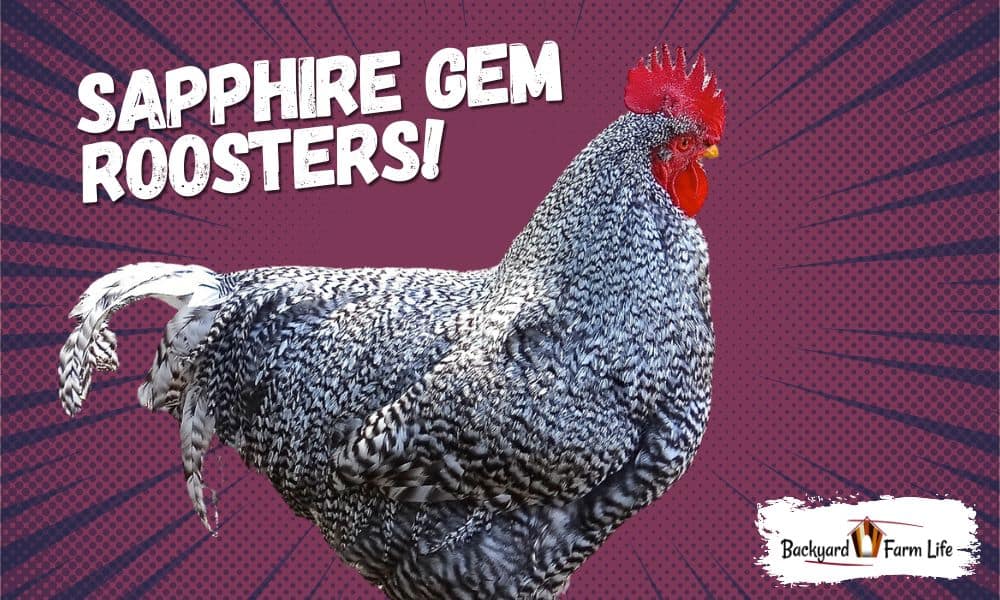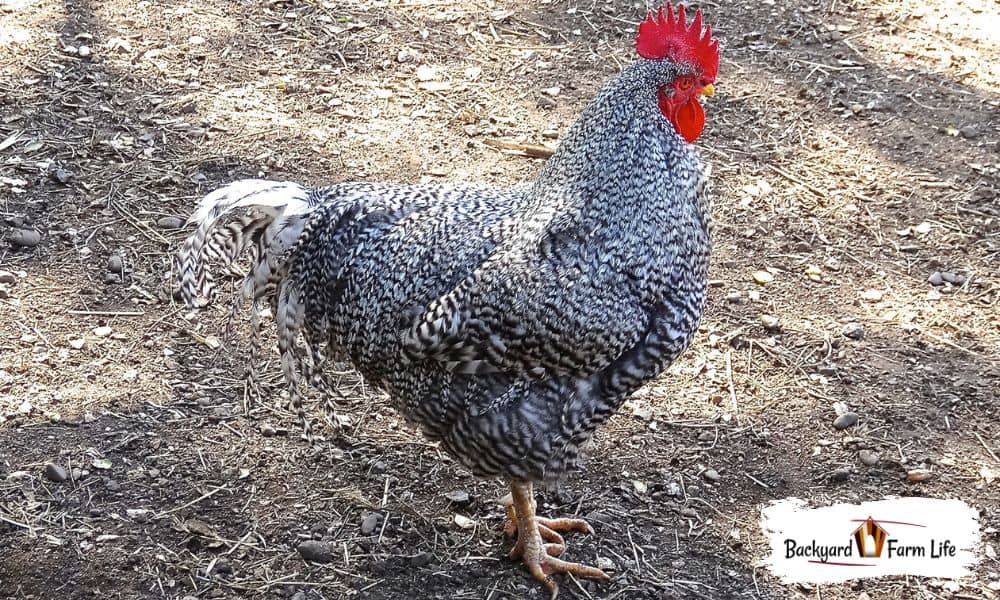Anyone who has raised roosters before will attest that every roo has a different personality!
Some roosters are known for their ferocity, some for their overbearing and protective tendencies.
So where does the stunning Sapphire Gem rooster fit into the mix?
For those that are looking to raise Sapphire Gems and for those that are simply curious, here’s everything you ought to know about Sapphire Gem roosters, their characteristics, temperaments, and their behaviors.
Contents
Sapphire Gem Chickens
So where did these beautiful blue beauties come from?
Sapphire Gem chickens are said to have originated in the Czech Republic and are a sex-link hybrid cross of a Barred Plymouth Rock and a Blue Plymouth Rock.
This is why Sapphire Gem roosters have the same white barring that you usually see on Barred Rocks.
Of course, being a hybrid cross, Sapphire Gem chickens are not recognized by the American Poultry Association. They’re also very rare, with only a handful of registered hatcheries providing Sapphire Gem chooks.
Still, this doesn’t stop those who want a fresh blue chicken for their flock!
Sapphire Gem Roosters Characteristics

While Sapphire Gem hens have that beautiful deep, blue plumage, Sapphire Gem roosters seemed to have pulled the short straw.
Sapphire Gem roosters do have some blue plumage, but it’s not as obvious since it’s barred with white speckles too.
Still, beautiful in their own right, Sapphire Gem roosters grow up to medium-large size, weighing between 5-7 pounds.
They have white bushy tail feathers and grow very traditional red combs and wattles.
You can tell a Sapphire Gem rooster from a Sapphire Gem hen as the roosters have much more pronounced wattles and combs, are slightly larger, and have white barring across their hackle and body feathers.
Sapphire Gem Rooster Temperament
Whenever you are expecting hens but find out you’ve got a rooster in the flock, you immediately start thinking about how the flock dynamics can change.
The good news is Sapphire Gem roosters are known to have very reasonable temperaments, having a reputation to be calm, friendly, and easy-going.
If you already have other roosters in the flock then it’s likely any new Sapphire Gem roosters won’t challenge the status quo, as they are known to be timid and normally end up further down the pecking order!
Are Sapphire Gem Roosters Aggressive?

One of the biggest fears amongst new chicken owners is a rooster’s aggression. Plus, we’ve all heard of those horror stories of particularly aggressive roosters attacking humans.
But in truth, it’s highly unlikely for a Sapphire Gem rooster to show aggression.
The only exception is when integrating Sapphire Gem roosters into a new flock, or integrating other chickens with your existing Sapphire Gems.
This type of aggression is absolutely normal and is there to shape the pecking order. Chickens usually fall in line once this hierarchy has been established.
Sapphire Gem roosters aren’t the type to go picking a fight, but they do still demonstrate territorial behaviors. They generally do a good job at leading their flock if they do end up as top-rooster too.
When Do Sapphire Gem Roosters Start Crowing?
Male characteristic behaviors such as crowing generally start when cockerels reach maturity.
For Sapphire Gem roosters, maturity is normally between 16-20 weeks.
From as young as 12 weeks you may hear them trying to find their voice, but Sapphire Gem roosters will start crowing regularly from as young as 20 weeks old.
Although Sapphire Gem roosters will crow in the morning, they don’t tend to crow as much during the day as some other breeds. Always a bonus.
That’s All Folks!
Sapphire Gem Roosters have the same white barring from their parent breed the Barred Plymouth rock, with the addition of blueish greyish plumage.
If you were expecting Sapphire Gem hens but you think you have a rooster, don’t fret. Sapphire Gem roosters are incredibly docile and timid creatures, great for any sized flock.
They’re not generally aggressive, and much quieter than other roosters, and they still have quite a unique beauty to them too!
What’s not to like?!
